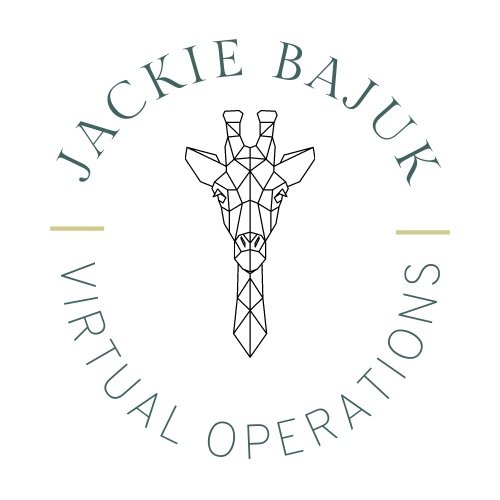Staying Organized: Tools and Techniques for Interior Designers
As an interior designer, juggling client expectations, creative visions, and project deadlines can feel overwhelming. Staying organized isn't just a nice-to-have; it’s essential for delivering stunning interiors while managing your business efficiently. In this advanced guide from Jackie Bajuk Virtual Operations, we'll explore tools, techniques, and strategies tailored to help interior designers stay on top of their game.
1. Why Staying Organized is Non-Negotiable in Interior Design
Interior design is a multifaceted industry that combines creativity with logistical prowess. Without organization, even the most talented designers can find themselves facing missed deadlines, budget overruns, and dissatisfied clients. Staying organized enables you to:
Deliver projects on time and within budget.
Enhance collaboration with clients and contractors.
Maintain your creative flow without distractions.
Provide a great client experience.
2. Essential Tools for Professional Interior Designers
Every successful interior designer has a toolkit of digital and physical tools. Here's a breakdown:
Digital Tools
Design Software: Programs like AutoCAD, SketchUp, and Revit allow for precise planning and realistic 3D renderings. These tools are crucial for visualizing designs and communicating ideas to clients. I maybe bias but my favorite is Chief Architect because you can create elevations, construction drawings/documents, and renderings/walkthrough’s while drawing only once.
Product Management Software: MyDoma, DesignFiles, Studio Designer and Indema are all catered to our industry and help with organizing selections, streamlining the procurement process, assist with time tracking and financials, and more.
Project Management Platforms: Tools like Asana, Click-up, or Monday.com help track tasks, timelines, and team collaboration.
Mood Board Apps: Canva or Morpholio Board streamline the creation of client presentations.
CRM’s: Platforms like Honeybook and Dubsado allow you to template, track, automate and organize your client experience files including proposals, contracts, services guides, welcome packets, questionnaires, and more! Learn more about what Customer Relationship Managment software is right for you in our blog “Customer Relationship Management (CRM) for Interior Designers”.
Physical Tools
Drafting Supplies: A high-quality drafting table, T-squares, and mechanical pencils remain staples for sketching layouts.
Material Samples: Keep fabric swatches, paint chips, and tile samples organized in labeled binders or boxes.
Measuring Tools: Laser measurers and tape measures are indispensable for site visits.
By blending these tools, you can efficiently manage both the creative and operational sides of your business. For discounts on some of these tools and information on more, check out my Resources page.
3. How Design Software Transforms Interior Spaces
Why Use Design Software?
Interior designers use design software to streamline the planning and execution process. These programs allow you to:
Experiment with layouts without wasting materials.
Provide clients with a clear vision of the end result.
Ensure accurate measurements and scaling.
How It Helps Create Spaces
Software like SketchUp allows you to play with colors, textures, and furniture placement in real-time. Chief Architect, also integrates technical details such as lighting and structural considerations, ensuring your designs are both beautiful and functional.
4. Organizing Your Interior Design Projects
Start with a Centralized System
Use a project management tool like Asana or Click-up to house all project-related documents, timelines, and tasks. This ensures that you and your team are always on the same page.
Break Projects Into Milestones
Define clear stages, such as concept development, design presentation, sourcing materials, and installation. Assign deadlines to each milestone and regularly communicate progress with your clients.
Leverage Cloud Storage
Platforms like Dropbox make it easy to share files and keep everything accessible, no matter where you are.
5. Managing an Interior Design Firm
Running a small firm has its challenges, but the right strategies make all the difference.
Efficient Staff Management
Regular Check-Ins: Weekly team meetings keep everyone aligned.
Task Delegation: Use tools like Asana to assign roles and communicate efficiently on projects.
Time Management Tips
Time Blocking: Dedicate specific hours to client consultations, design work, and administrative tasks.
Automation: Use a CRM with scheduling tools and canned templates for appointments and automating your client communication.
Need help implementing software to streamline your operations? Don’t miss our blog on Integrating business software & why you should hire help.
6. Techniques for Time Management as an Interior Designer
Prioritize Your To-Do List
Start each day by identifying your top three priorities. Focus on these before tackling less critical tasks.
Set Realistic Expectations
Be upfront with clients about project timelines, and examples of how the timeline could change. This reduces stress and builds trust.
Batch Similar Tasks
Group activities like material sourcing or client communication together to maintain focus.
By adopting these tools and techniques, you can transform your workflow, allowing you to focus more on what you love—designing stunning interiors. For more professional tips tailored to your needs, explore the blog at Jackie Bajuk Virtual Operations.
Let’s make staying organized the easiest part of your creative journey!




